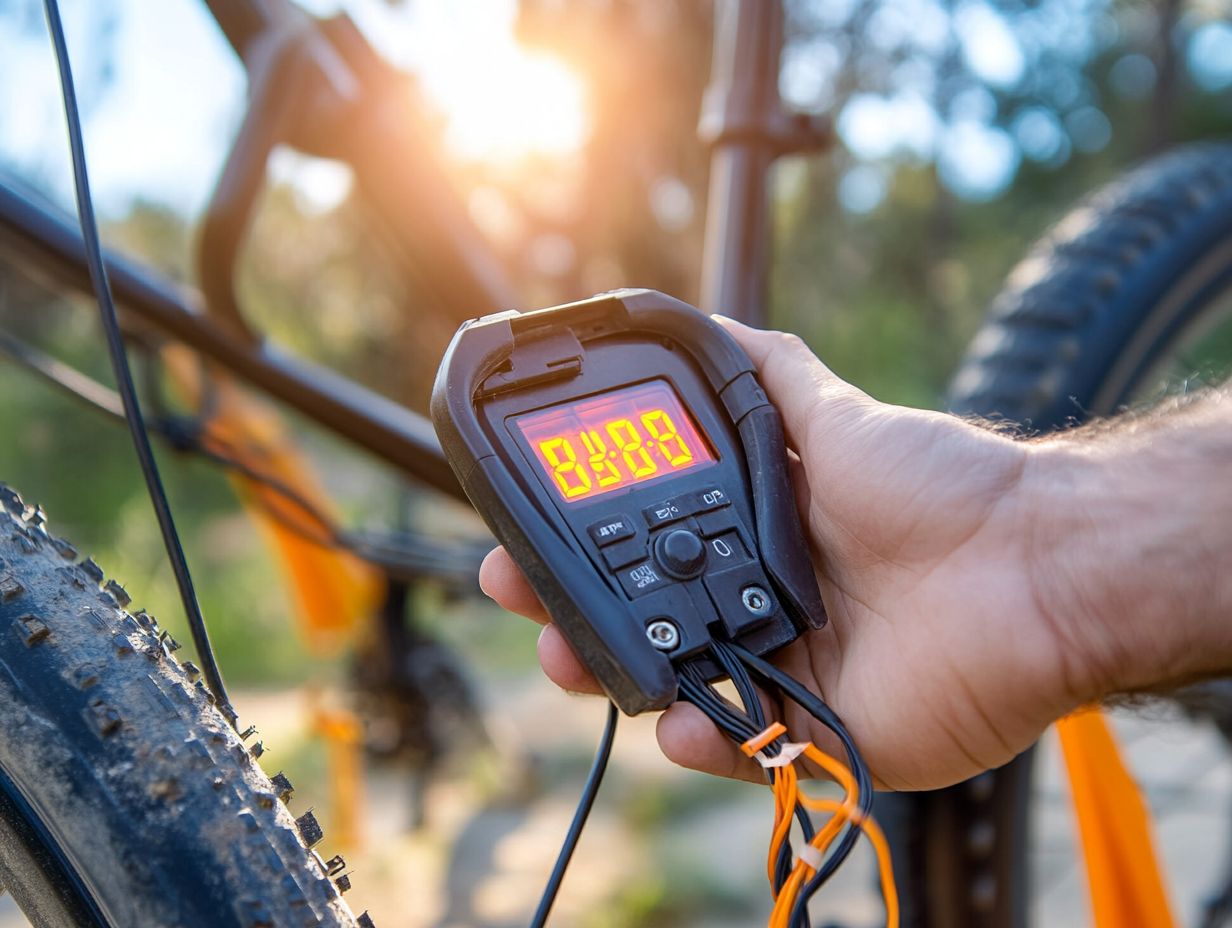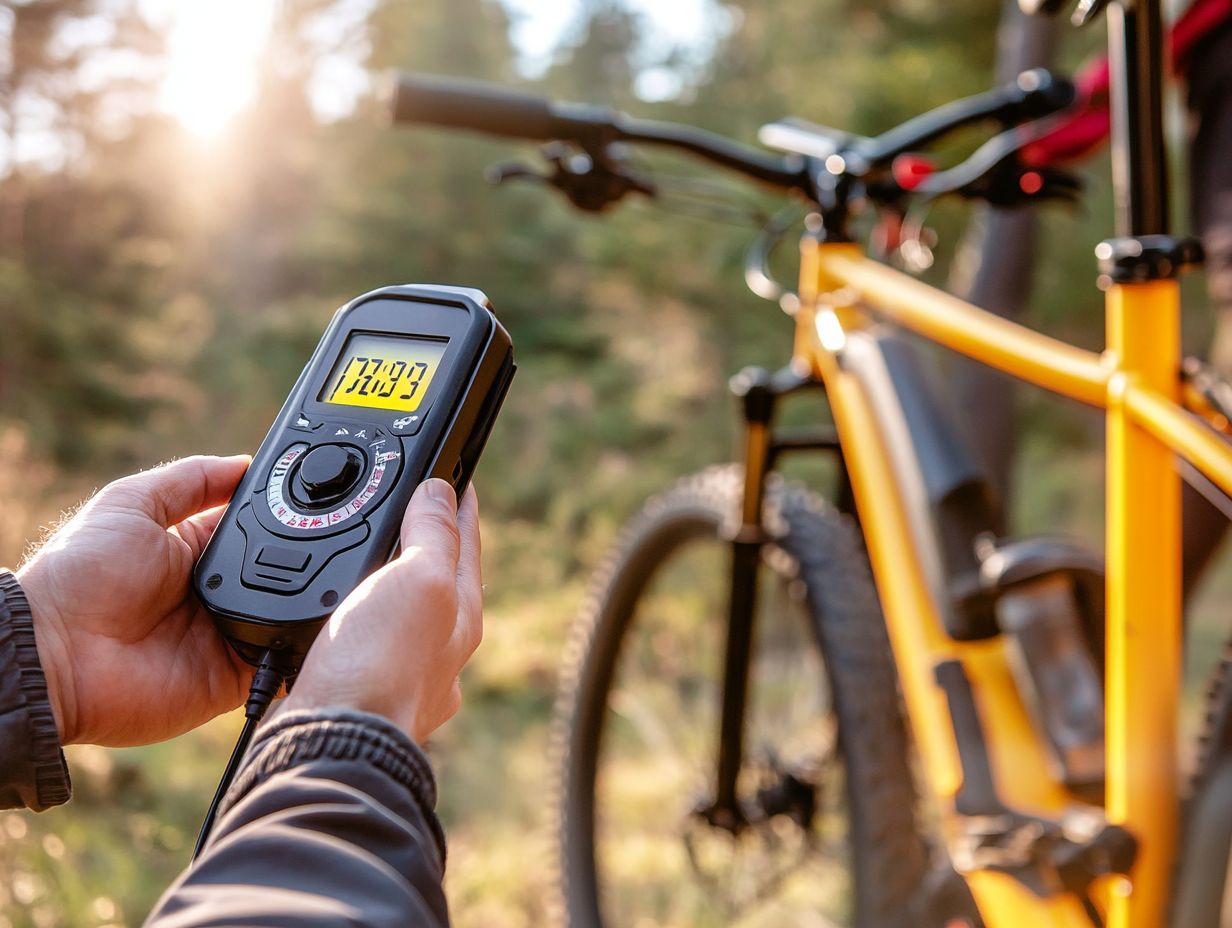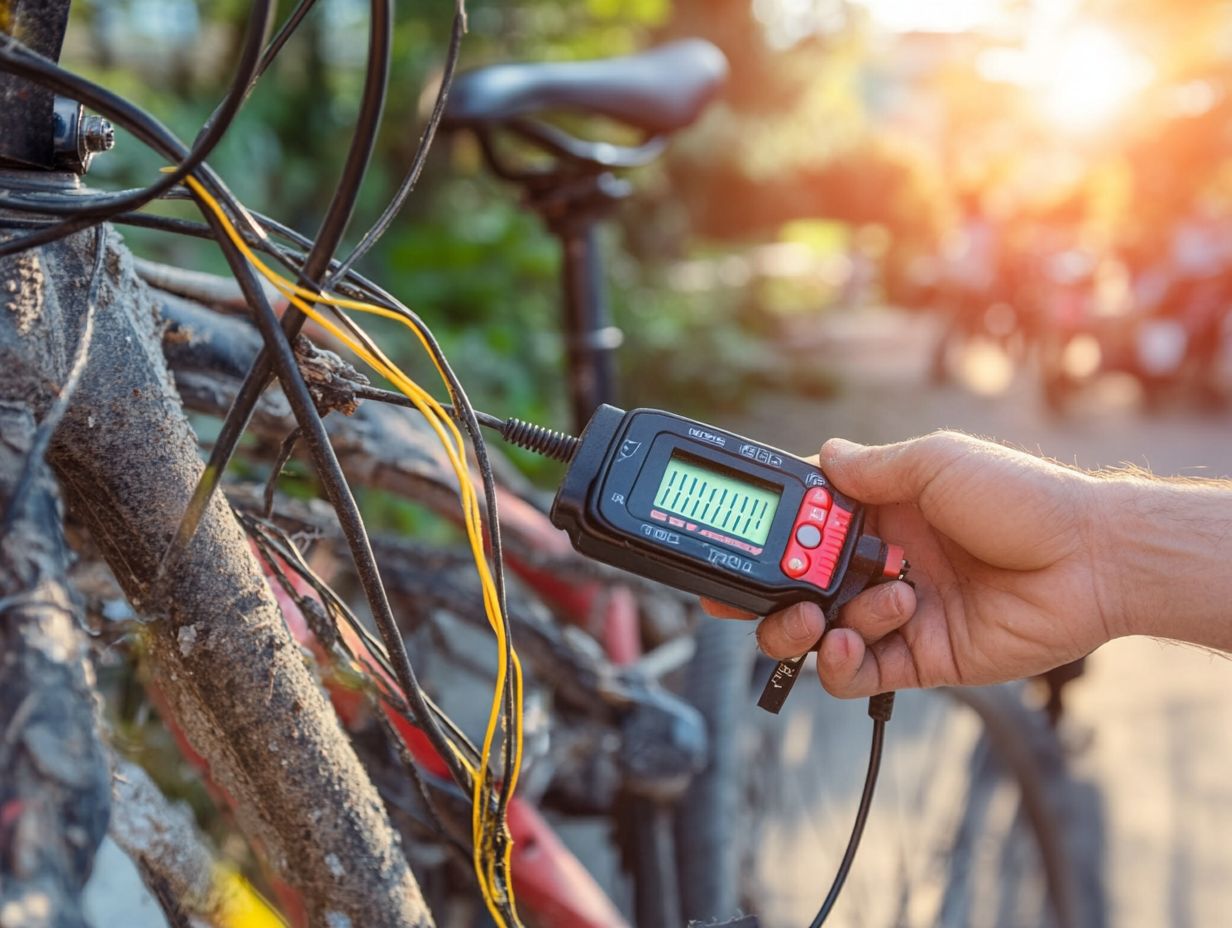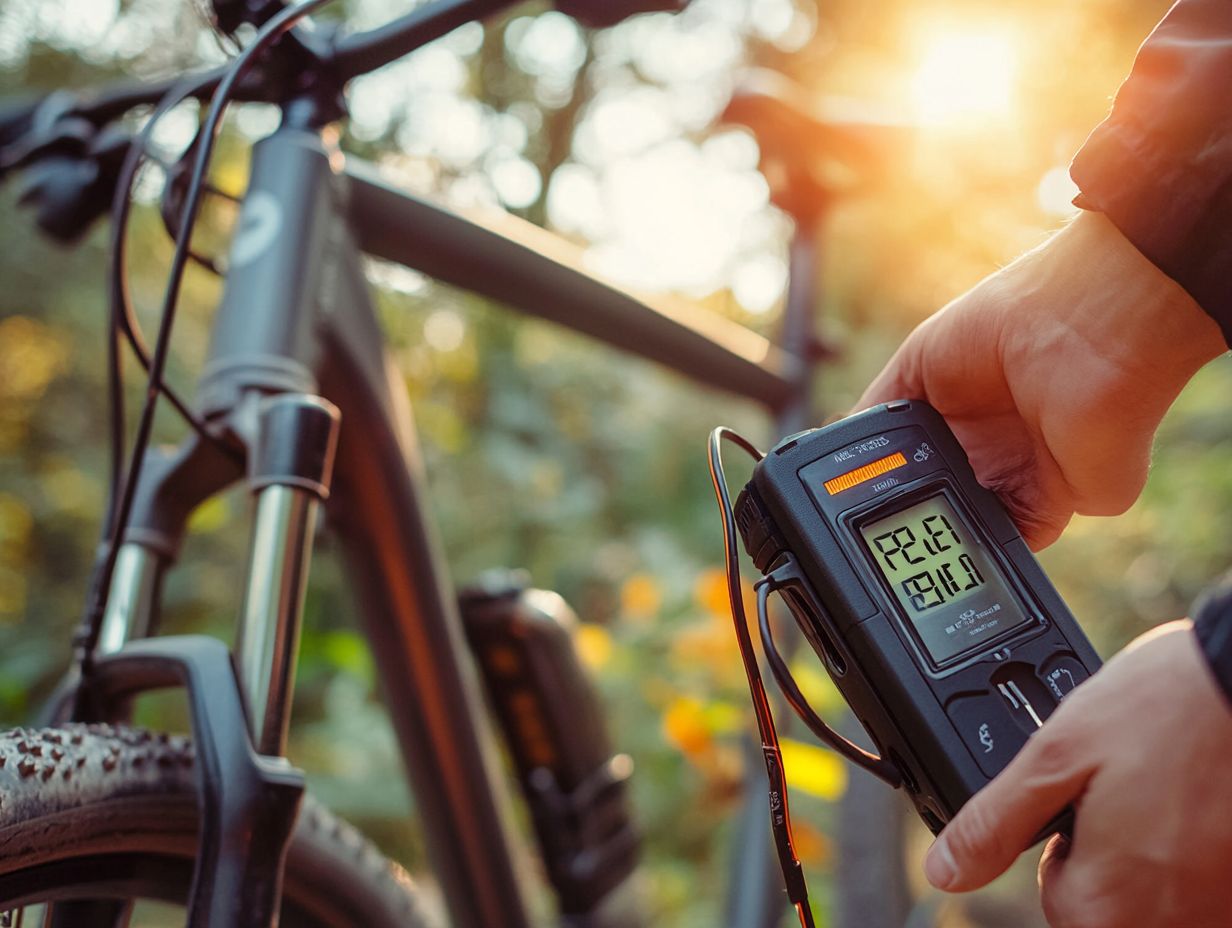What are the Signs of a Failing E-Bike Battery?
E-bike batteries are the heartbeat of your ride. They fuel your adventures and ensure that every journey goes smoothly. However, like any technology, they can face challenges over time.
This guide offers crucial insights into e-bike batteries. It covers the various types available, things that can affect battery life, and the key signs that suggest your battery may be on the decline.
You ll uncover the common causes of battery failure, explore preventive measures to prolong lifespan, and gain expert tips on when and how to select a replacement.
Let s dive in and unlock the secrets to keeping your e-bike running at its best!
Contents
- Key Takeaways:
- Understanding E-Bike Batteries
- Signs of a Failing eBike Battery
- Causes of Battery Failure
- Common Reasons for Battery Failure
- Preventive Measures
- Tips for Maintaining Battery Life
- Replacing an E-Bike Battery
- When to Replace and How to Choose a New Battery
- Frequently Asked Questions
- Signs Your E-Bike Battery Might Be Failing
Key Takeaways:

- Decreased range is a sign of a failing e-bike battery; it can no longer hold a charge for the same distance as before.
- Difficulty holding a charge indicates internal damage or deterioration.
- Physical damage, such as cracks or leaks, means the e-bike battery must be replaced immediately to prevent further damage or danger.
Understanding E-Bike Batteries
Understanding e-bike batteries is essential for optimizing the performance and lifespan of your electric bike. This is especially important regarding their interaction with key components like the charger and the lithium-ion technology that powers them.
E-bike batteries, particularly those prevalent in the USA, are engineered to deliver sufficient range and power. However, their efficiency hinges on various factors, including charge cycles, maintenance practices, and storage conditions.
By familiarizing yourself with these aspects, you can make informed decisions about replacements and elevate your overall riding experience.
Types of E-Bike Batteries
The primary types of e-bike batteries you ll encounter are lithium-ion, lead-acid, and nickel-metal hydride, with lithium-ion reigning supreme as the most popular choice. Its lightweight and high energy density significantly enhance overall performance.
The benefits of lithium-ion batteries go beyond just being easy on the scale; they deliver higher voltage levels, which means you ll experience more efficient power during your rides. When you stack them against lead-acid batteries, which are often heavier and bulkier, lithium-ion options truly shine. They allow you to cover longer distances between charges, elevating your e-bike experience.
However, it s important to be aware of the potential downsides, such as their sensitivity to extreme temperatures and the higher upfront cost. The type of charger you use can also influence battery longevity. By opting for a quality charger specifically designed for lithium-ion technology, you can maximize both performance and lifespan. Skimping on chargers might lead to diminished efficiency down the line.
Factors Affecting Battery Life
Several factors can greatly influence the lifespan of your e-bike battery. Charge cycles, maintenance practices, storage conditions, and environmental factors like temperature all play a critical role in maximizing battery performance.
Understanding how these elements interact is essential for you as an e-bike user who wants to enhance the riding experience. Charge cycles are the complete process of using up your battery’s power and then recharging it. By limiting these cycles, you can extend its lifespan.
Engaging in regular maintenance practices like keeping those battery terminals clean can significantly boost efficiency and performance. Store your battery in a cool, stable environment to reduce self-discharge rates, which tend to rise in higher temperatures. Ideally, you should aim for moderate storage conditions, as extreme heat or cold can severely impact your battery’s capacity over time.
Signs of a Failing eBike Battery
Recognizing the signs of a failing eBike battery is crucial for maintaining your electric bike’s performance and safety. Issues like diminished range, reduced power, and difficulty holding a charge are clear indicators that your battery may be on the verge of failure.
Watch out for other red flags as well, such as swelling, overheating, and any physical damage. These should never be overlooked. By identifying these warning signs early, including signs your electric bicycle needs immediate repair, you can tackle potential issues before they escalate into complete battery failure. This allows you to continue enjoying a dependable riding experience.
Decreased Range

A decreased range is often the first noticeable sign that your eBike battery is starting to show its age. This indicates that it s no longer delivering the best power needed for peak performance.
Several factors contribute to this decline. Age plays a significant role; as time passes, the battery s efficiency diminishes, and chemical reactions within it become less effective.
The number of charge cycles also matters greatly. Frequent recharging can lead to wear and tear on the battery’s components. Moreover, environmental conditions also affect battery performance. Extreme temperatures can exacerbate the issue heat can accelerate degradation, while cold can seriously impact performance.
For example, if you re riding your eBike in colder climates without adequate insulation, you might find its range significantly reduced.
To tackle these challenges, regular inspections are essential, along with proper storage and charging practices. Keeping the battery away from extreme temperatures and replacing it when necessary will go a long way in maintaining its performance.
Difficulty Holding a Charge
Experiencing difficulty holding a charge is a clear sign that your battery may be facing health issues. This often stems from high self-discharge rates (the rate at which a battery loses its charge when not in use) or age-related decline.
As a result, you might notice a gradual inability to maintain energy levels, which can hinder your everyday functionality. While self-discharge is a natural occurrence in all batteries, certain factors like temperature fluctuations, manufacturing defects, or improper maintenance can intensify the problem. This can cause even relatively new batteries to underperform.
To combat these effects, it s wise to adopt best practices such as:
- Storing batteries in optimal conditions
- Avoiding overcharging or completely discharging them
- Regularly cycling them to keep a healthy charge
Investing in high-quality chargers can also make a significant difference. This helps to prolong battery life and enhance overall performance.
Physical Damage
Physical damage to your eBike battery can manifest in several concerning ways, such as swelling or punctures. These issues not only impact the battery’s performance but can also pose serious risks to your safety while riding.
A compromised battery could lead to overheating, leaking hazardous materials, or even electric failure, all of which jeopardize your well-being. This type of damage might result from rough handling, accidents, or even prolonged exposure to extreme weather conditions.
Therefore, it’s essential for eBike owners like you to carry out regular inspections, keeping an eye out for any signs of wear or physical harm.
If you spot any damage, taking immediate action is key. This might mean consulting a professional for repairs or replacements to ensure you avoid potential hazards while enjoying your ride.
Causes of Battery Failure
Grasping the causes of battery failure is essential for you as an eBike owner. Various factors can impact performance and reduce battery longevity, including inadequate maintenance, excessive charge cycles, and environmental influences.
By pinpointing these common issues, you can take proactive measures to prevent battery failure and significantly extend the lifespan of your eBike battery.
Don’t wait until it’s too late! Regularly check your eBike batteries for these signs to ensure safety and performance.
Common Reasons for Battery Failure
Common culprits behind e-bike battery failure include insufficient maintenance, improper storage, and excessive charge cycles. Each factor can significantly diminish battery performance.
These issues lead to reduced battery capacity, resulting in shorter and less enjoyable rides. Neglecting maintenance often shows up as dirty connectors and terminals, which create resistance and hinder performance.
Storing your battery in extreme temperatures disrupts the chemical processes within the cells, risking permanent damage. Overcharging puts unnecessary stress on the battery, cutting its lifespan short.
By understanding these factors, you can take proactive measures. Establish effective maintenance routines, monitor your charging habits, and store your battery in ideal conditions to ensure it remains reliable and performs well for a long time.
Preventive Measures

Take action now! Implement preventive measures to keep your e-bike running smoothly. This includes routine maintenance, thorough inspections, and avoiding overcharging.
By taking proactive steps like conducting regular road tests and adhering to best practices you can drastically cut your risk of battery failure!
Tips for Maintaining Battery Life
Maintaining the longevity of your e-bike battery hinges on essential practices. Regular inspections, avoiding overcharging, and adhering to optimal charging times are crucial to keeping your battery in prime condition.
Regularly check for signs of wear and tear. This helps catch issues early. Charge your battery according to the manufacturer s guidelines typically when the charge drops below a certain percentage to maximize its lifespan.
Store your battery at moderate temperatures and avoid extreme cold or heat to enhance efficiency. Regularly monitor the connectivity points and ensure they are clean for better performance.
This will ultimately extend the overall life of your e-bike battery and increase its charging cycles.
Replacing an E-Bike Battery
Understanding when it’s time to replace your e-bike battery is vital for maintaining performance. Key indicators like a reduced range or trouble holding a charge signal that a replacement may be necessary.
Familiarize yourself with the specifications of the new battery, particularly its voltage and amp-hour ratings. These ratings measure battery capacity; higher ratings mean longer usage times, which is essential for optimal performance.
When to Replace and How to Choose a New Battery
Deciding when to replace your e-bike battery can feel overwhelming. However, unmistakable signs indicate it s time for a new one. Pay attention to decreased range and lackluster performance; these are clear indicators.
If the charging time starts taking much longer than it used to, that’s another hint for a replacement.
When investing in a new battery, ensure compatibility with your e-bike. Consult the e-bike‘s manual or the manufacturer’s website for specifics like voltage and amp-hour ratings. Even the tiniest discrepancies can impact your ride’s performance and charging time. Additionally, be aware of common e-bike issues that could arise with battery replacements.
Opt for batteries that come with a robust warranty. Take time to read user reviews about brands like Addmotor or Emotis. Gather insights on long-term satisfaction from users who have been in your shoes.
Frequently Asked Questions
Have more questions? Feel free to reach out for personalized assistance!
Signs Your E-Bike Battery Might Be Failing

- How can I tell if my e-bike battery is failing?
Look for signs like reduced range and slower acceleration. Difficulty holding a charge is also a clear indicator. - Will my e-bike give me any warning when the battery is failing?
Some models have a low battery indicator light. However, always pay attention to your bike’s performance for any signs of failure. - Can extreme temperatures affect the life of my e-bike battery?
Yes, both extreme heat and cold can damage battery cells. This can significantly reduce its lifespan. - How often should I replace my e-bike battery?
On average, an e-bike battery lasts between 2-4 years. Be proactive and replace it if you notice signs of failure. - Want to make your e-bike battery last longer?
Avoid extreme temperatures and charge it to full capacity regularly. These simple steps can help extend its life. - Is it worth investing in a higher quality e-bike battery?
Yes! While it may cost more upfront, a quality battery can save you money in the long run with better performance and lifespan.






